What do women and trekking bikes have in common? We set off on a gravel-cum-trekking ride to shatter stereotypes and prejudices and put forward the proof that technological advances aren’t everything.
When Johanna, a former law school classmate, called to ask if she could have a go at this whole bikepacking thing with me, I wasn’t sure if it was a good idea. I mean, we couldn’t be much more different. Her: civil servant, lawyer, government councillor, and, honestly, pretty posh. Me: the freethinker who quit university to become an entrepreneur. While she does CrossFit and has the six-pack to prove it, I’m a hedonistic neo-hippy, for whom thoughts of pushing myself to hit power numbers on the bike couldn’t be further from my mind. Sure, we both ride for ‘fun’, but each with our own interpretation of the word. Despite only discovering road riding last year, Johanna already has a tidy 10,000+ km logged on Strava this year and knows precisely how to decipher all the data from each ride. And me? We’re talking less than 300 kilometres on the clock. I’m at my laziest ever, while she’s at her strongest.

The experiment: E as in equality?
The fact that she lives in pancake-flat Hamburg with barely any climbing in her legs and has never ridden a gravel bike doesn’t make things any better. The odds are, quite simply, stacked against me: I’ll never be able to keep up. Well, not unless I have some assistance. So, that was that. It was decided (mainly by me) that we’d switch assumed roles, refuting conventional gender stereotypes and do what makes complete sense in situations like these but hardly ever happens. Technologically we may have the world at our feet, but in our heads most of us still live in the Stone Age, living out the idea of the man as the hunter and her as the gatherer, of him being strong and her being weak. Bullsh*t. Why do we hold onto these stereotypes instead of accepting reality? It’s time to embrace emancipation and the freedom that comes from not living within a stereotypical norm!
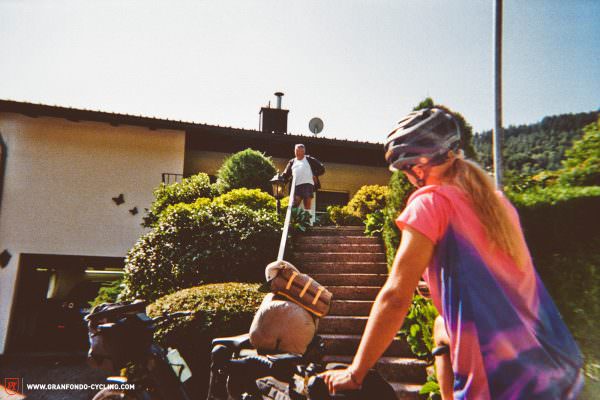

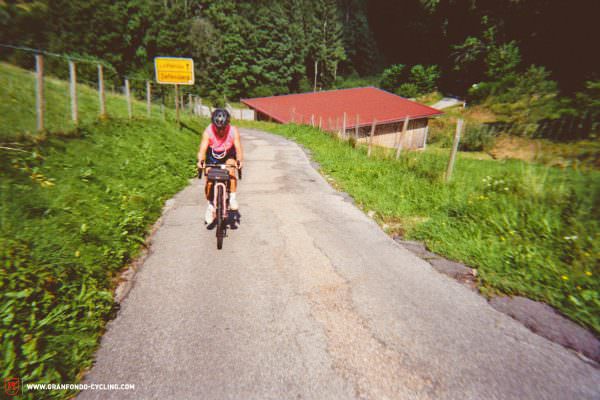
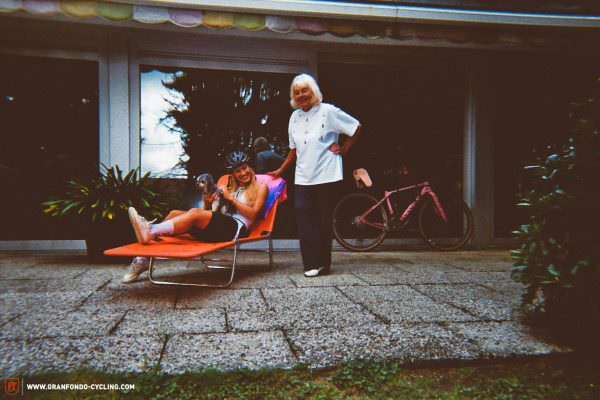
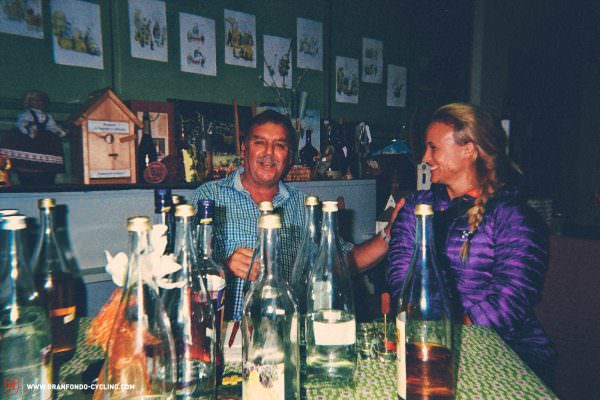
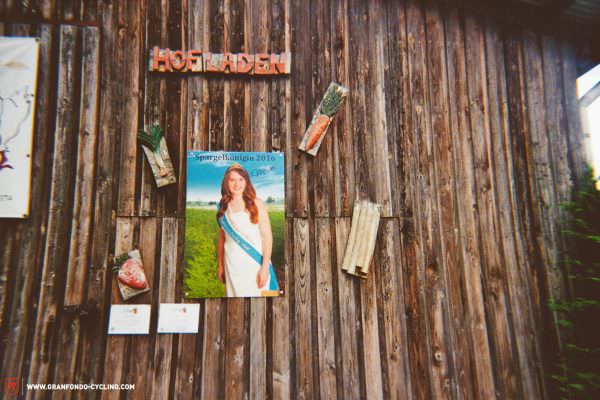
I wait for Johanna to arrive before explaining my plan: I’ll be the one riding the Riese & Müller Homage, an off-road step-through eMTB that’s a strong representative of a new generation of modern electric trekking bikes with two integrated 625 Wh batteries, full suspension, capable off-road tires, front and rear racks and navigation courtesy of the Bosch Nyon computer. Is it a good match to ride alongside the Canyon Grizl gravel bike? Her with the legs, me with the motor. Me with fat tyres and more luggage than any gravel bike could ever hold, her with the minimal approach and super lightweight luggage. We’re probably onto a winning formula but only time will tell.
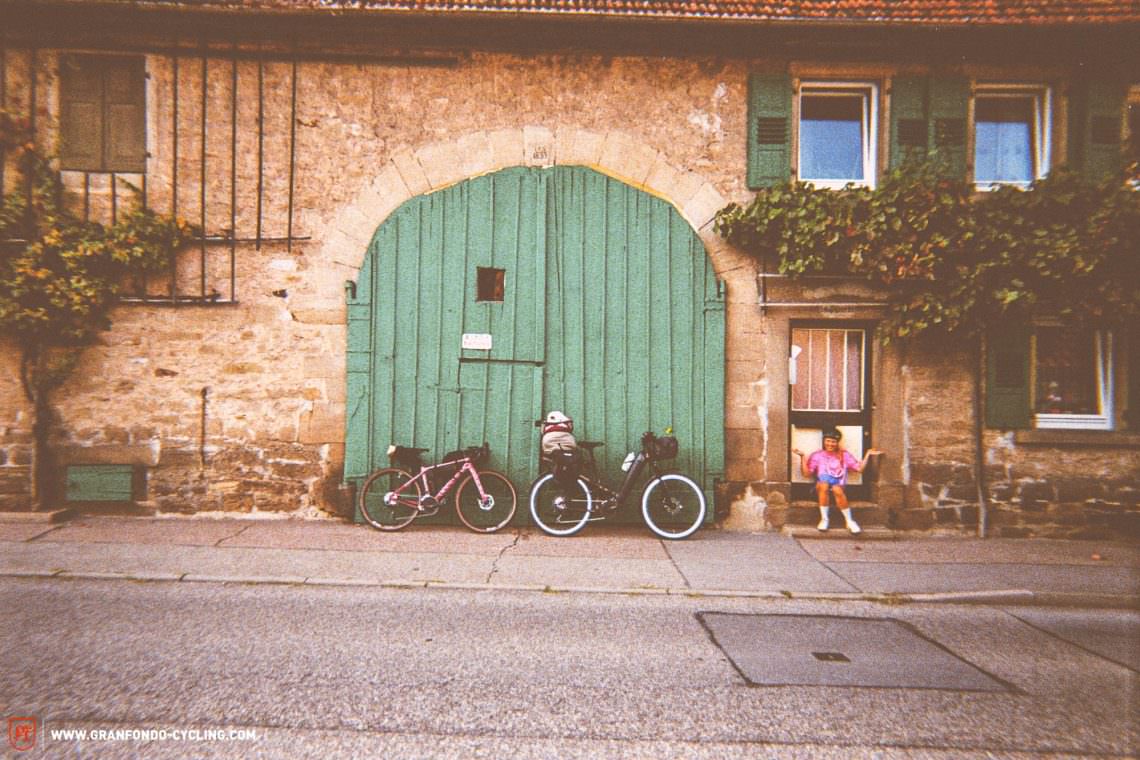
Who cares whether we call it gravel, touring, or bikepacking. What counts is the experience – the journey, having a good time, exploring and new encounters. It’s a personal choice whether you choose to ride with motorised support or not. When the gravel hype started bubbling, the fascination wasn’t tied to specific technical innovations but to the untethered spirit that you can interpret however the hell you like. And that’s exactly what we’ve decided to do: while she feels the lactic burn in her legs, I’ll get the luxury of powered progress and ample space in my bike bags.
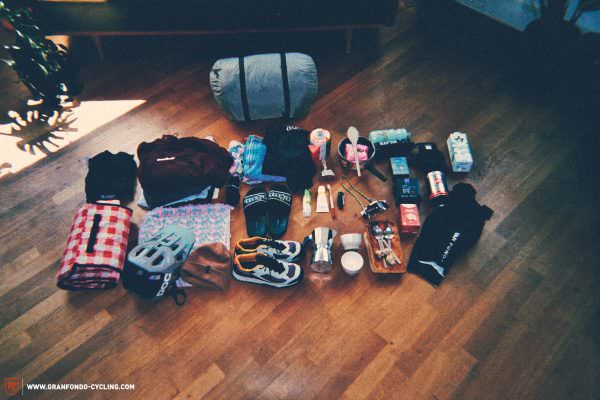
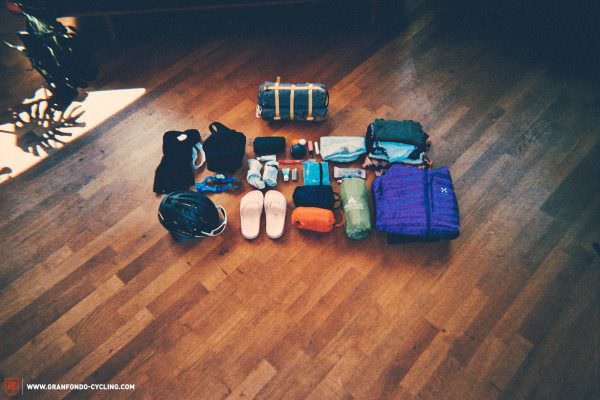
“Because it’s nice”
Bike-touring is always a compromise: what can you take with you, how much weight can you handle, how much space do you have? When you’re packing your gravel bike, it’s not just every gram that counts but every millilitre of volume. Therefore, there are two arts to packing – the what and the how. Some people relish this pre-ride puzzle, others less so. As someone who loves nice things that usually don’t make the shortlist for a gravel bike equipment list, I resolutely fall into the second camp. If I can take a ceramic mug, wooden chopping board and proper crockery instead of having to make do with ultra-lightweight plastic or titanium bits and pieces that do little if anything to add to the culinary experience, then I will. I found room for them in our cargo bike-meets-vanlife trip, so I reason that a packhorse like the R&M Homage with front and rear racks can definitely handle them. And my sleeping bag? Unashamedly 10x more voluminous than Johanna’s anaemic-looking one.
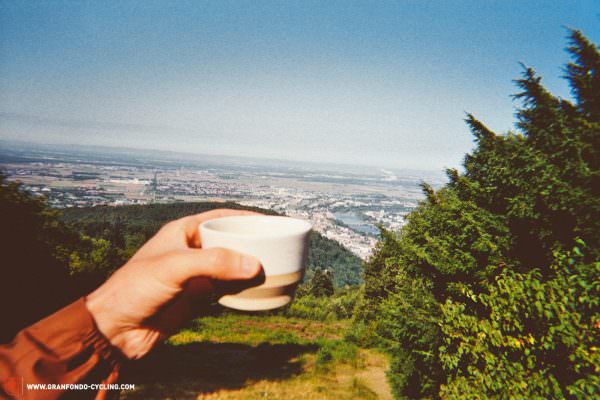
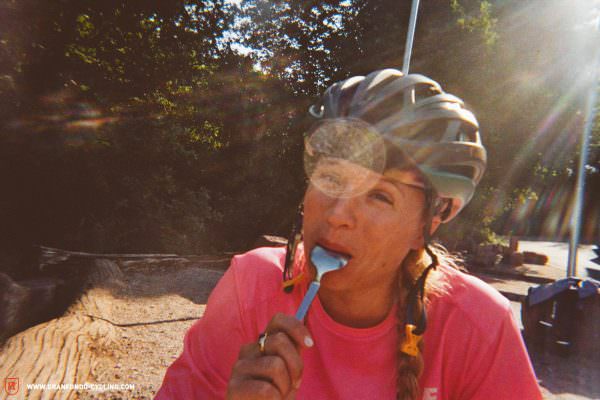
A new generation of E-trekking bikes
Up until now, riding a trekking bike was considered uncool. These were bikes that were designed and equipped with little love, offering the bare minimum in terms of performance and functionality. Let us explain: poor suspension forks that offer little in terms of support or comfort. Skinny tires with minimal traction on rough gravel roads – good luck to you if you accidentally stray from the tarmac. No-name components mean brands can meet certain price points instead of ensuring optimum performance. Furthermore, there is their image. Gravel and trekking share the same spirit and mindset but brands market them completely differently: gravel is epic, trekking is conservative, middle class and for the older generation. But fitness and personal preferences on how you want to ride are not down to age groups but individual circumstances.
Despite life having been hard on E-trekking bikes in terms of image, they continue to be strong sellers, even more so now that the category has been electrified. But that’s also where things have gone so wrong for poor trekking bikes.
As electric bikes became a serious entity within cycling, the landscape changed drastically. It’s not simply the fact that bikes got motors (future! technology!) but how these creations are capable of things that go far beyond their conventional counterparts. Whether as an urban all-terrain rig, family-transporter, climb-crusher or substitute car, eMTBs broaden horizons and open up the world’s best sport to an unbelievable number of people. They then get to tap into the many, many benefits of cycling, including boasting about a better hobby, better health and better day-to-day life. In short: better quality of life.
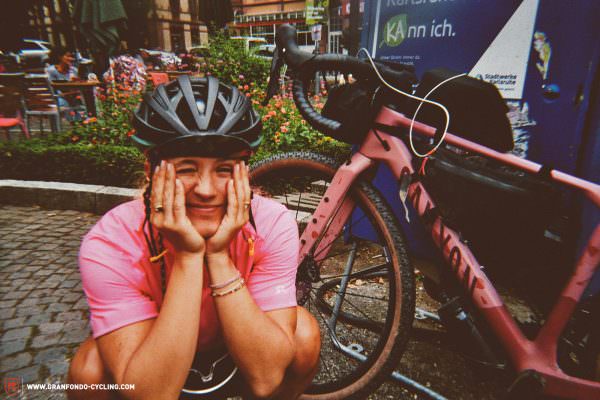
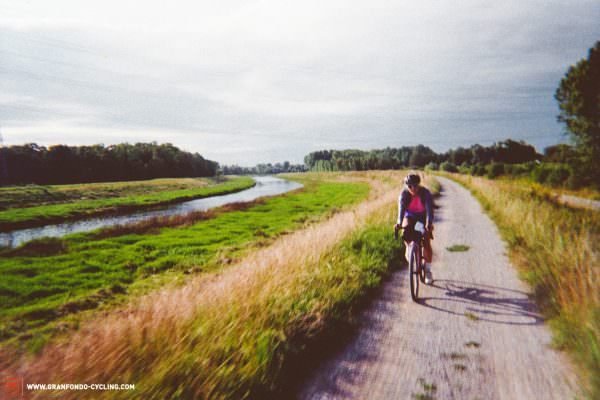
But electric trekking bikes have found themselves on the losing side throughout most of this boom. While the eMTB managed to reimagine and greatly expand on the possibilities of mountain bikes, the concept of electric trekking bikes remained lumbered with historic expectations. That’s unfortunate because adding motor assistance changes the many essential parameters that have defined trekking bikes for decades. Where innovation and opportunities could have run rampant, the industry insisted on building and selling bikes that perform so-so on a long touring ride – that might be fine for some, but constitutes a major compromise, particularly when you consider that these bikes are anything but cheap. In most cases, trekking bikes haven’t even come close to living up to their potential. However, some brands, including Riese & Müller, have navigated the sea of potential and come up with considered solutions. And they’ve now been joined by a handful of other brands who are redefining the trekking and touring side of cycling. Just like us! Touring is, to state a fact, rad. As the least pretentious and most beautiful way to be a bike tourist, it’s a composite of gravel and bikepacking, but with straight bars. It’s the most egalitarian way to travel yet conversely, still the most stigmatised one by those in other segments who snobbishly look down on the meagre bike tourer. But times are changing. A new day for trekking bikes is dawning and fresh appreciation is growing, as you’ll discover in the groundbreaking trekking bike group test of our sister publication E-MOUNTAINBIKE.
Just try it: Get your hybrid head on to get the most out of touring!
Modern technology is trying to convince us that human encounters are redundant. Instead of asking for directions, we google it. When looking for recommendations, we check online ratings. In most situations, you’ll reach for your phone or Garmin instead of waving someone down to ask for help or advice. But this eradicates human interaction, the beauty of the unknown, meeting new people, getting real local tips. Next time, be brave. Choose to interact with someone on the sidewalk instead of your smartphone. Punctured or lost? Prime opportunity for interaction offline. That’s exactly the approach we took and were rewarded with impromptu dinner invites, village fêtes, perfect camping spots (until the rain hit late at night), offers for accommodation, afternoon tea invites, and, probably the least wanted side effect, a lousy hangover or two. (You try turning down homemade schnapps – it’s not easy).
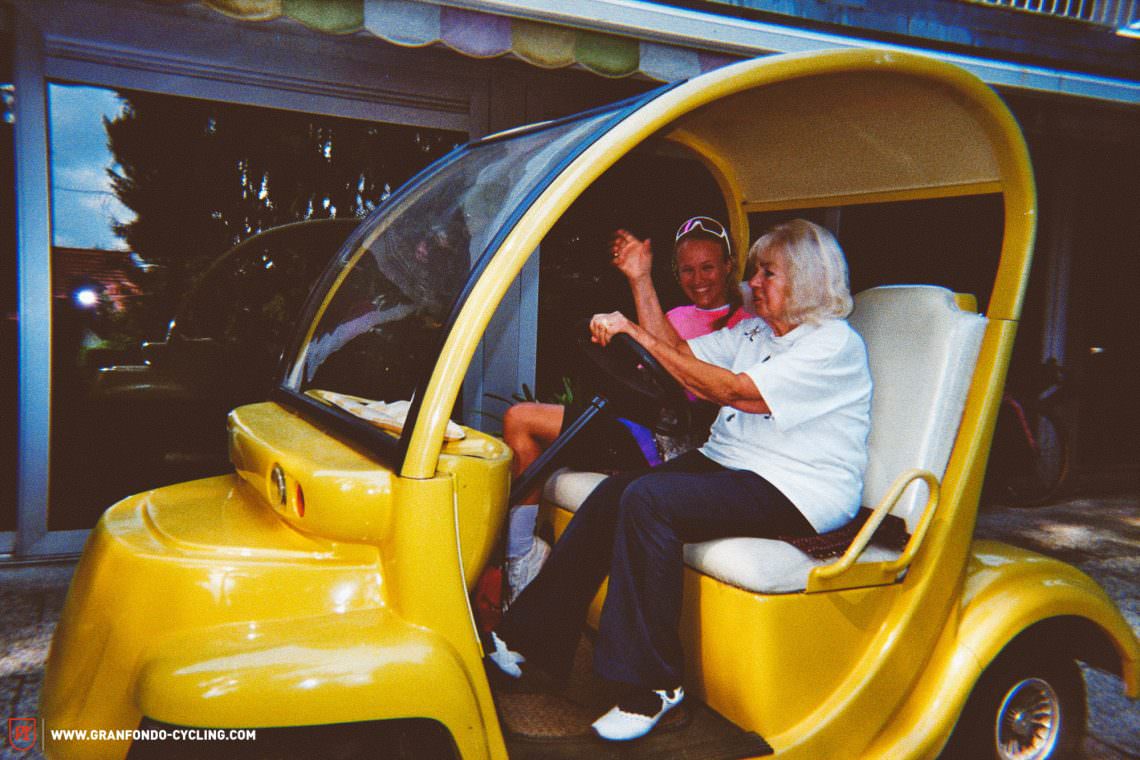
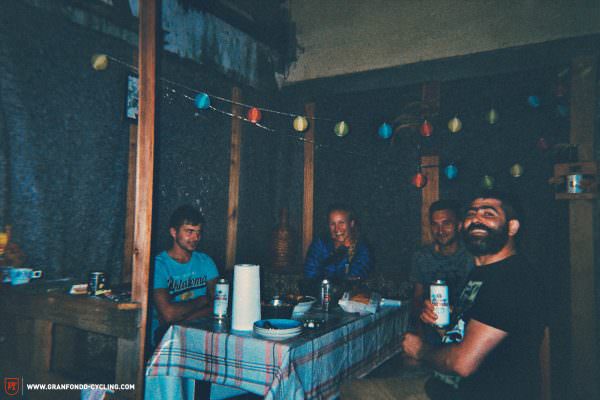
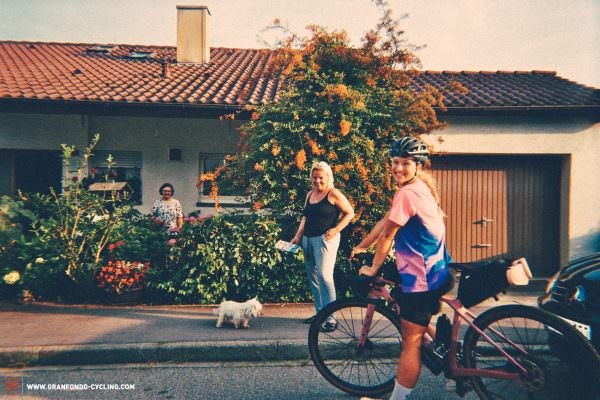
The art of honest encounters
There’s the old idiom that you shouldn’t judge a book by its cover and unfortunately, there’s a conception held by many that luxury goods scream a lot about an individual – a marker of wealth, class, taste, but also beliefs, politics and more. That’s why status symbols need to be looked upon with maturity otherwise you risk only having superficial contact with people. As humans, we’re visual by nature and, at times, all of us are guilty of letting preconceptions get in the way of actually finding out more about the person standing opposite you. There are so many more materialist markers that we can read alongside body language. These aren’t always out of place or wrong, but they can act like a filter or, worst case, as a barrier preventing honest, human encounters.

There are no obvious status symbols at the centre of a sweaty bikepacking ride, laden down with luggage. This event is all about the journey and that’s what strangers are curious about, welcoming you to their village, part-fascinated, part-keen to be involved by offering help. As a rider travelling through their environment, you bring new stories and a new perspective to the lives of people you meet. You’ll only hear your voice in the woods by listening harder, not by shouting louder, so understand that local tips come from local people, so give them a smile, exchange some friendly words and who knows what invites might come your way.

Jumping to judgements < Listening or asking!
“Hey buddy, you rode the ebike and left the girl to fend for herself?” “Typical, she’s getting a ride in while you’ve been left with the luggage – good job you’ve got a motor, mate!” Goddamnit, whichever way it’s seen, there’s criticism. You can’t please everyone, especially not when they’ve got age-old notions imprinted in their minds that make them confident of knowing everything. It’s a judgement many have reached before they know the individual or the situation. So, slow down. Don’t judge us. Just like you choose to live like you do, we have chosen to ride this way for a reason, so why not ask us about it? Being wrapped up in a prescribed idea of gender roles and lifestyle choices is damaging to democracy and minorities, as well as to ourselves. It’s 2021, let’s think fluidly and be open to surprising encounters. If not, who knows what opportunities we’ll miss?
Trapped in gender stereotypes
As a male, you need to be the strong one, the doer, the practical one. Getting overtaken by a girl on a climb? “Jeez, no way!” is probably your first thought and the one you were brought up to believe. It’s a mindset instilled into society, reiterated by the media and even school textbooks. Often we are completely unaware that we’ve fallen into a set role and adopted a way of being or acting in certain situations. It’s not right though: we set ourselves boundaries that restrict our freedom to live life how we want.
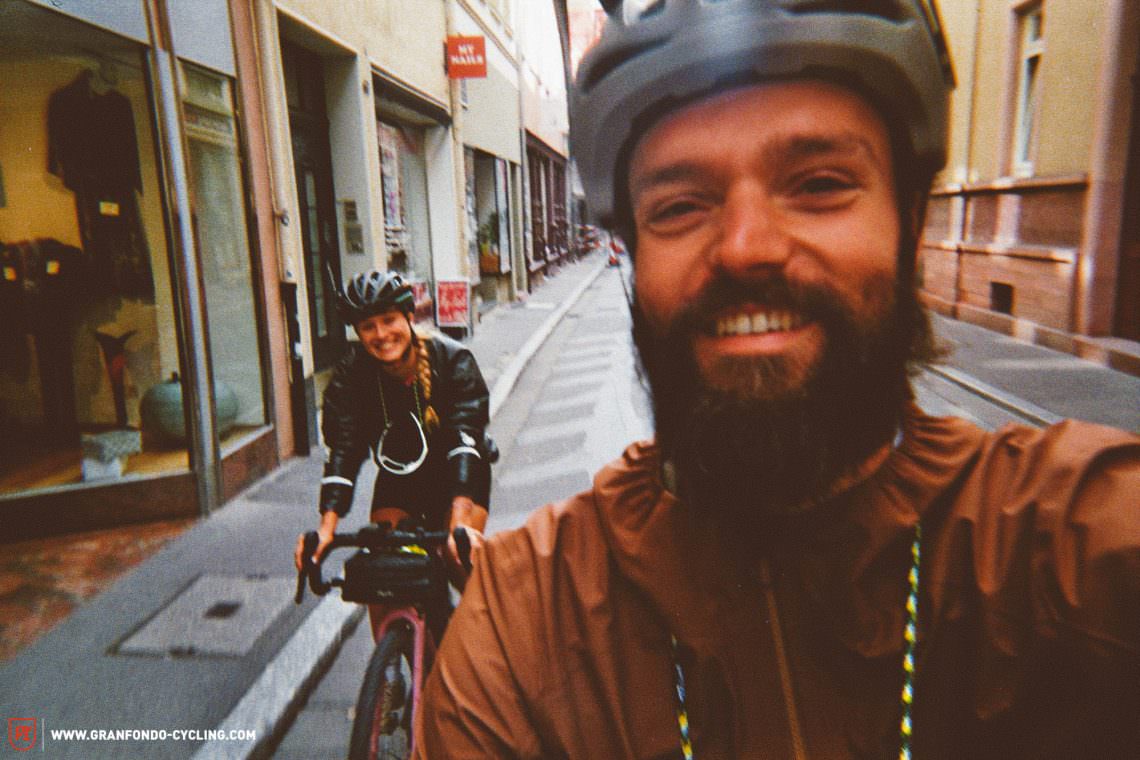
As the ride goes on, we continue to clash with convention, village after village and it’s not just because we’ve upset the norm with the male on a step-through ebike. And even when it’s observed that Johanna is on the Canyon gravel bike, I’m the one that people direct their questions to about said bike. Obviously, Johanna, simply by virtue of being a woman, doesn’t have a clue about tire pressure or compliance, right?
We react though. We answer directly. We don’t ignore the assumption or let it fly by unaddressed. If technology can advance as quickly as it does, can’t human attitudes do the same?
It’s going to take self-emancipation to reach equality. Because if we can’t be responsible for ourselves, then who will be? It’s not enough to know that we shouldn’t feel obliged to squeeze into a stereotype, like being the strong, emotions-on-ice male, or the submissive, makeup-wearing woman who has to look her best at all times. We need to take it further by doing whatever the hell we want and throwing social convention out of the water. That, my friends, is what makes a role model fit for our times.
Does the trekking ebike and gravel bike union work?
While the trekking ebike and gravel bike union hasn’t changed our reasons for riding (performance vs pleasure), it did create a harmonious pairing for the purposes of this ride. Excluding the flat sections when Johanna on her gravel bike could drop me with ease, it was a winning pairing and we both got what we wanted out of our time in the saddle, and then some. Given the different effort levels, we both perceived the environment we passed through in different ways and that’s a beautiful thing to be aware of.
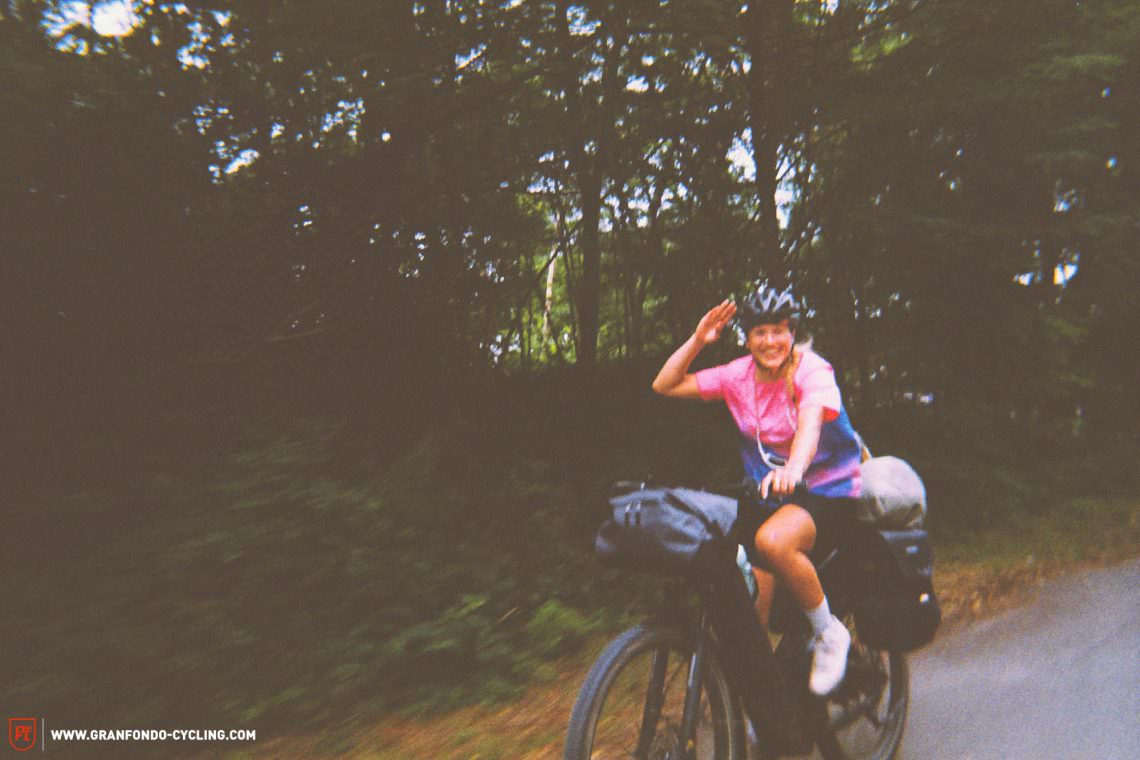
Conclusion
Travelling changes you, every single time you go out. But especially this journey, where we broke down so many stereotypes and learned that regardless of whether you’re gravel riding, bikepacking or bike touring, with or without motor assistance, every ounce of technological innovation requires attitudes to undergo the same shift and vice versa. Lift your head from your phone and you’ll learn that adventures, encounters and interactions await behind every corner. Life is flipping glorious in its diversity – celebrate it, let it in. Ultimately, we all crave the same thing: good times, movement and a chance to create unforgettable memories.
Tips
- Plan less, embrace spontaneity!
- Pack what makes you happy. The feel-good factor is a valid reason for an item to go in your bag.
- Your trip, your pace. If you find a nice location, why hurry away?


- They say “Less is more,” but Johanna’s decision to pack just one jersey was overambitious. Good job we’re not the sort to shy away from interaction with hotel staff – can we wash and dry our kit? Sure thing. Fresh kit on the daily!
- You can’t put a price on a good rain jacket.
- Take cash – vending machines aren’t always credit card compatible.
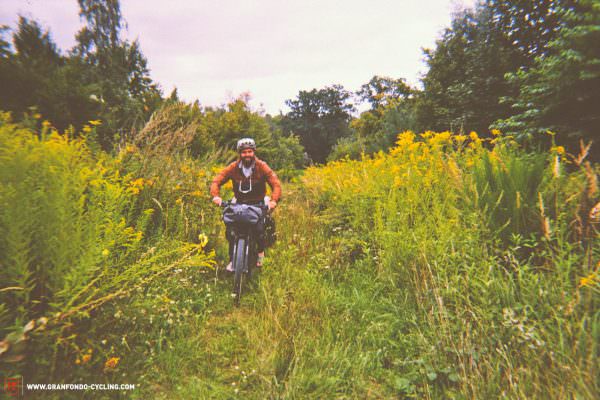
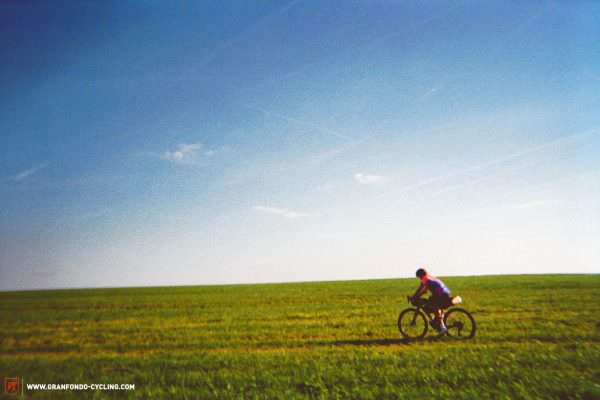
- Set off and go wild over the next climb. Behind the next chicken coop, there’s an adventure waiting.
- Bad weather or weary legs are a solid conversation starter and who knows where they’ll lead.
- Those who ride with an open heart will be met with open arms. Don’t gorge on kilometres but savour them. Take time to digest and look around you.
- You can never greet too many people (but you can greet too few).
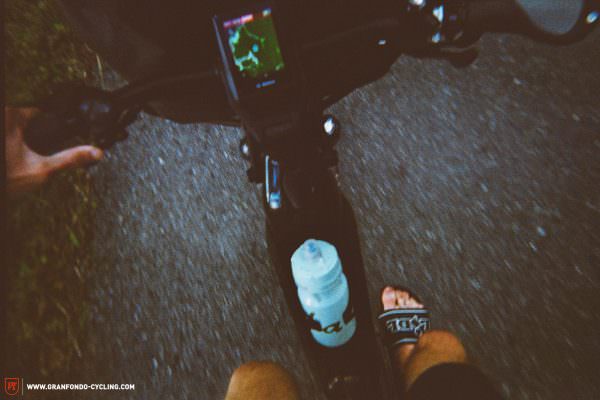
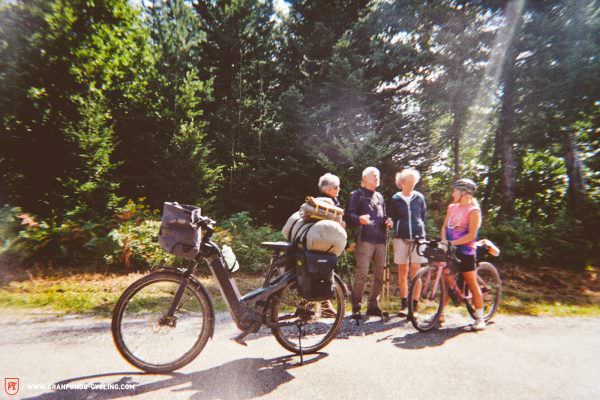
- Don’t forget your navigation: We followed our ride relying on a beautiful mix of Komoot, bike path signs, roadside advice, and route recommendations courtesy of the Bosch Nyon computer. Lessons: Komoot enjoys sending you on the less-trodden, sometimes gnarly off-piste route, while Bosch prefers the popular bike routes.
Did you enjoy this article? If so, we would be stoked if you decide to support us with a monthly contribution. By becoming a supporter of GRAN FONDO, you will help secure a sustainable future for high-quality cycling journalism. Click here to learn more.
Words & Photos: Robin Schmitt







